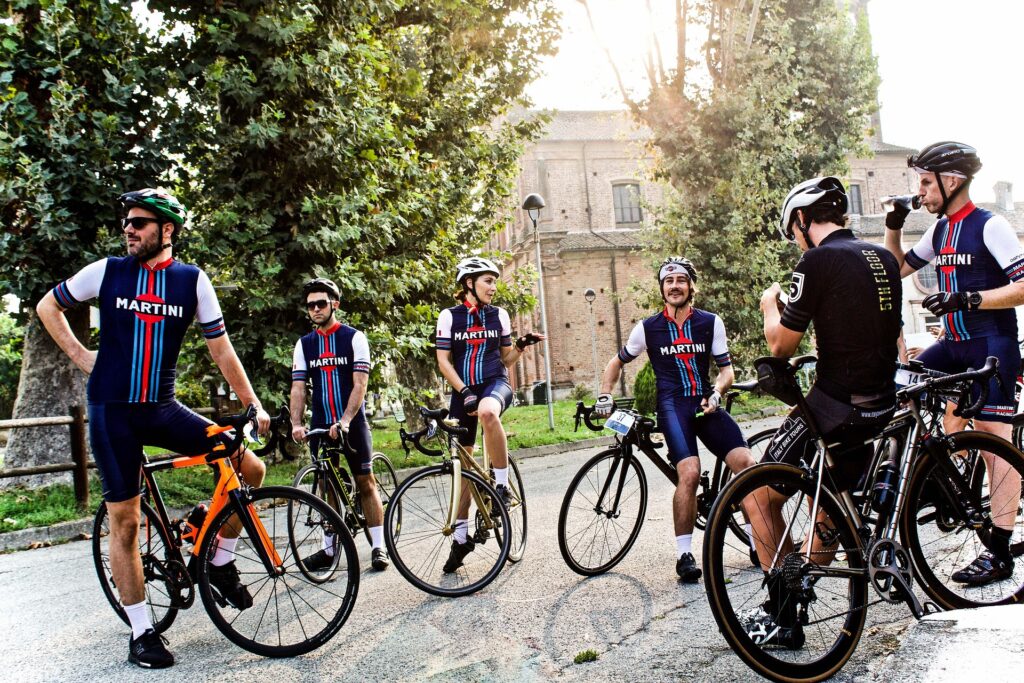Group rides hold a unique place in a cyclist’s training routine. They offer camaraderie, unpredictability, and the potential for spontaneous efforts, making them both enjoyable and challenging.
For those in Build, Peak, or Race periods, group rides can be an excellent tool to hone skills, push limits, or simply recover actively, depending on how you choose to approach them.
This blog explores the benefits and drawbacks of group rides, how to adapt them to your fitness goals, and tips for maximizing their value.
Why Group Rides Are Essential to Cycling Culture
Group rides embody the social aspect of cycling, bringing together riders of different abilities to share the road. Beyond their social appeal, they also provide training opportunities that are hard to replicate in solo sessions. The unpredictable nature of group dynamics—changing paces, surges, and drafting opportunities—mimics real-world racing conditions, preparing you for tactical scenarios.
Whether you’re seeking a casual ride with friends or an intense effort with competitive cyclists, group rides can adapt to your needs. The key is knowing how to approach them based on your fitness level and goals.
Adapting Group Rides to Your Training Phase
Riding Based on Feel
Group rides during Build, Peak, or Race periods are ideal for riding intuitively. This flexibility allows you to adapt your effort to how you’re feeling on a given day. If you’re fatigued, you can sit in the draft, take fewer pulls, or break off and ride at your own pace. On days when you’re feeling fresh, group rides offer the perfect opportunity to push hard, surging into zones 5a–5c during sprints, climbs, or breakaways.
Structured vs. Unstructured Riding
For cyclists following a structured training plan, group rides might seem counterproductive. However, they can complement your regimen by introducing variability. Group rides aren’t about sticking rigidly to prescribed intervals but rather testing your ability to perform in unpredictable scenarios. They offer a chance to bridge gaps, respond to attacks, or practice pacing—all of which translate to better race-day performance.

The Pros of Group Rides
Skill Development
Group rides sharpen your bike handling skills, especially in close quarters. You’ll learn to corner efficiently, brake safely, and position yourself strategically within a pack. These skills are invaluable in races or organized events where pack riding is common.
Social Motivation
Riding with others can make long training sessions more enjoyable and motivating. The camaraderie of a group ride fosters accountability, as the shared experience encourages you to show up and give your best effort.
Simulated Race Intensity
The dynamic nature of group rides often mirrors race conditions, including surges, drafting, and tactical decision-making. These elements push you to work harder than you might during solo training, particularly during sprints or breakaways.
Variety in Training
Group rides break up the monotony of structured training plans. They allow for spontaneity and fun, reminding you of the joy of cycling beyond numbers and intervals.
The Cons of Group Rides
Lack of Control
One of the biggest challenges of group rides is the lack of control over pacing and intensity. If the group’s pace doesn’t align with your training goals, you may find yourself working too hard on a recovery day or not hard enough during a key session.
Potential for Overtraining
It’s easy to get swept up in the competitive nature of group rides, leading to overexertion. Repeated high-intensity efforts without proper recovery can hinder progress and increase the risk of burnout or injury.
Compromised Training Objectives
Group rides may not always align with your structured training plan. For example, if your goal is steady zone 3 endurance work, the surges and variability of a group ride might not provide the desired stimulus.

Maximizing the Value of Group Rides
Set Your Intentions
Before joining a group ride, decide how you want to approach it. Are you seeking a high-intensity workout, practicing drafting and pack skills, or enjoying a relaxed social ride? Setting clear intentions helps you align the ride with your broader training goals.
Communicate with the Group
If you’re using the ride as a recovery session, let others know that you plan to take it easy. On the flip side, if you’re aiming for an intense effort, position yourself with riders who match your desired pace or challenge your limits.
Ride Smart
During hard efforts, focus on maintaining smooth pedal strokes and efficient breathing. In the draft, conserve energy by staying low and close to the rider in front of you. These tactics improve your efficiency and prepare you for real-world racing conditions.
Know When to Break Away
If the group’s pace doesn’t suit your goals, don’t hesitate to break off and ride solo. This ensures that you get the most out of your session without compromising your training plan.
Group Ride Etiquette and Safety
Be Predictable
Signal your intentions clearly when braking, turning, or changing position within the group. This builds trust and keeps everyone safe.
Maintain a Steady Pace
Avoid sudden accelerations or decelerations, as they disrupt the group’s rhythm and increase the risk of collisions.
Stay Alert
Keep an eye on the road ahead and anticipate hazards, such as potholes or traffic. Communication is key—point out obstacles and inform the group of any changes in pace or direction.
Respect the Group Dynamic
Every group ride has its culture, whether it’s a fast-paced hammerfest or a casual social ride. Observe and adapt to the group’s norms to ensure a positive experience for everyone involved.

Integrating Group Rides Into Your Training Plan
Group rides can be a valuable addition to any training plan, provided they’re integrated thoughtfully. During Build and Peak phases, use group rides as opportunities to push your limits on hard days or practice tactical skills in a competitive setting. On recovery days, take a more relaxed approach, focusing on socializing and active recovery.
If you’re preparing for a race, group rides offer a low-stakes environment to refine race-day strategies, such as positioning, drafting, and timing your efforts. By balancing the intensity and duration of group rides with your structured sessions, you can harness their benefits without compromising your overall progress.
Conclusion
Group rides are a versatile and enjoyable component of cycling training, offering opportunities for skill development, social interaction, and performance gains. By riding intuitively—pushing hard when you feel strong and easing off when you’re tired—you can align group rides with your fitness goals while embracing the unpredictability that makes them so rewarding.
Whether you’re chasing personal records, preparing for a race, or simply seeking the thrill of riding with others, group rides have something to offer every cyclist. Approach them with clear intentions, ride smart, and enjoy the journey—because, at the end of the day, cycling is as much about the joy of the ride as it is about the pursuit of performance.


Leave a Reply